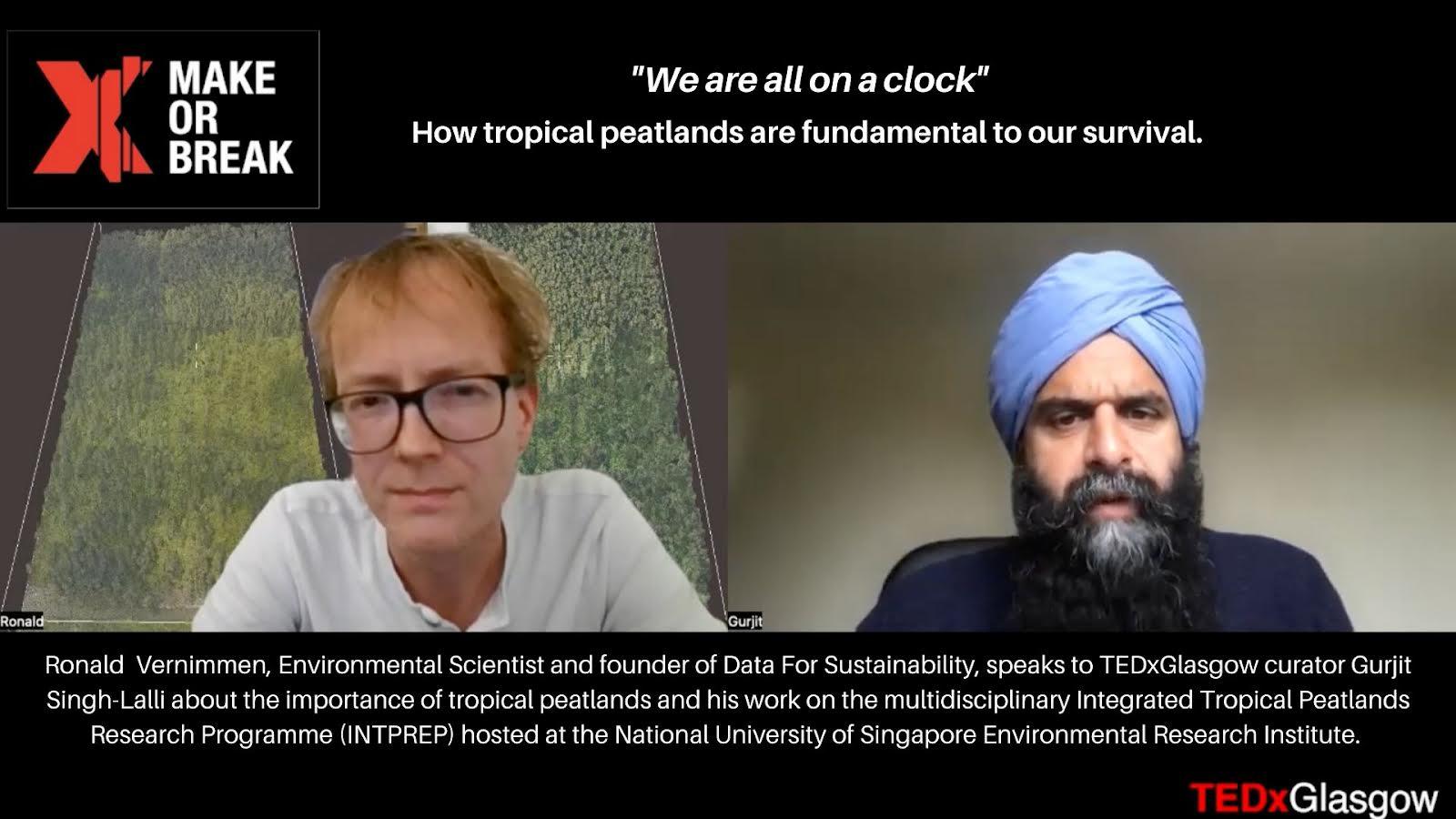
Peatland management and restoration is a key pillar of Forestry and Other Land Use (FOLU) NET SINK 2030, a key feature of the Indonesian government’s efforts against climate change. The goal is to achieve a scenario where greenhouse gas emissions is targeted to be at or higher than emissions in the FOLU sector in 2030, and the achievement of Indonesia’s FOLU NET SINK 2030 is estimated to be able to contribute up to 60% of the country’s net zero emissions target by 2060.
Ronald Vernimmen, Director at Data for Sustainability shared his insights in a conversation with TEDx Glasgow, where he highlighted the importance of tropical peatlands in achieving global net zero ambitions.

The good news he shared is that there are still large amounts of peatlands intact, meaning there has been no developments on it and they are still largely forested. But he cautioned the need to create buffers around intact peatlands, and restoring degraded tropical peatlands is a crucial step in reducing carbon emissions from these degraded areas although he emphasized that carbon emissions will continue for years, possibly decades, after restoration.
According to Ron, “the key to effective peatland management is mapping them and obtaining data to help with conservation & restoration planning because there are tens of thousands of square kilometers of land. Technology can unlock the information and LiDAR (Light Detection and Ranging) is one such technology currently being used.” Mounted on an aircraft or helicopter, it uses laser beams ‘fired’ from a sensor to a surface (Earth) with the light reflected back from the surface and the time it takes for the laser beam to return to the sensor is translated in a distance between the sensor and the reflected surface (land or vegetation).
LiDAR, Ron adds, can not only measure terrain elevation and vegetation structure accurately, but also water levels in drainage canals. Such data provides a baseline for peatland management and restoration. Another major development in peatland restoration is the Integrated Tropical Peatlands Research Programme (INTPREP) hosted at the National University of Singapore’s Environmental Research Institute (NERI). The programme seeks to determine what works given the environmental conditions and will help generate knowledge and provide restoration guidance.
On the role that the private sector can play in peatland management, Ron’s advice is for them to not wait for government regulations but to “start the ball rolling” by setting some positive examples such as the project he is currently working on. “One advantage the private sector has is that it typically has a long-term vision with long-term strategies which is needed when it comes to peatland management”, he said.
In terms of his order of priority, Ron emphasized on conserving intact peatlands because with 95% of remaining forests in lowland areas covered by peatlands, conserving those areas would help conserve huge carbon stocks. His second priority would be to restore as much as possible peatlands that have undergone development, particularly those that border conserved peatlands. The third priority would be to restore what is left. On his key takeaway, Ron said, “Conservation must be prioritized before restoration”.
Wise words to heed from a peatland insider and one who is an expert and well-regarded in the field of peatland research.


.jpg/13439ed2-d9ea-9b34-37bd-e9b6d393348e/)